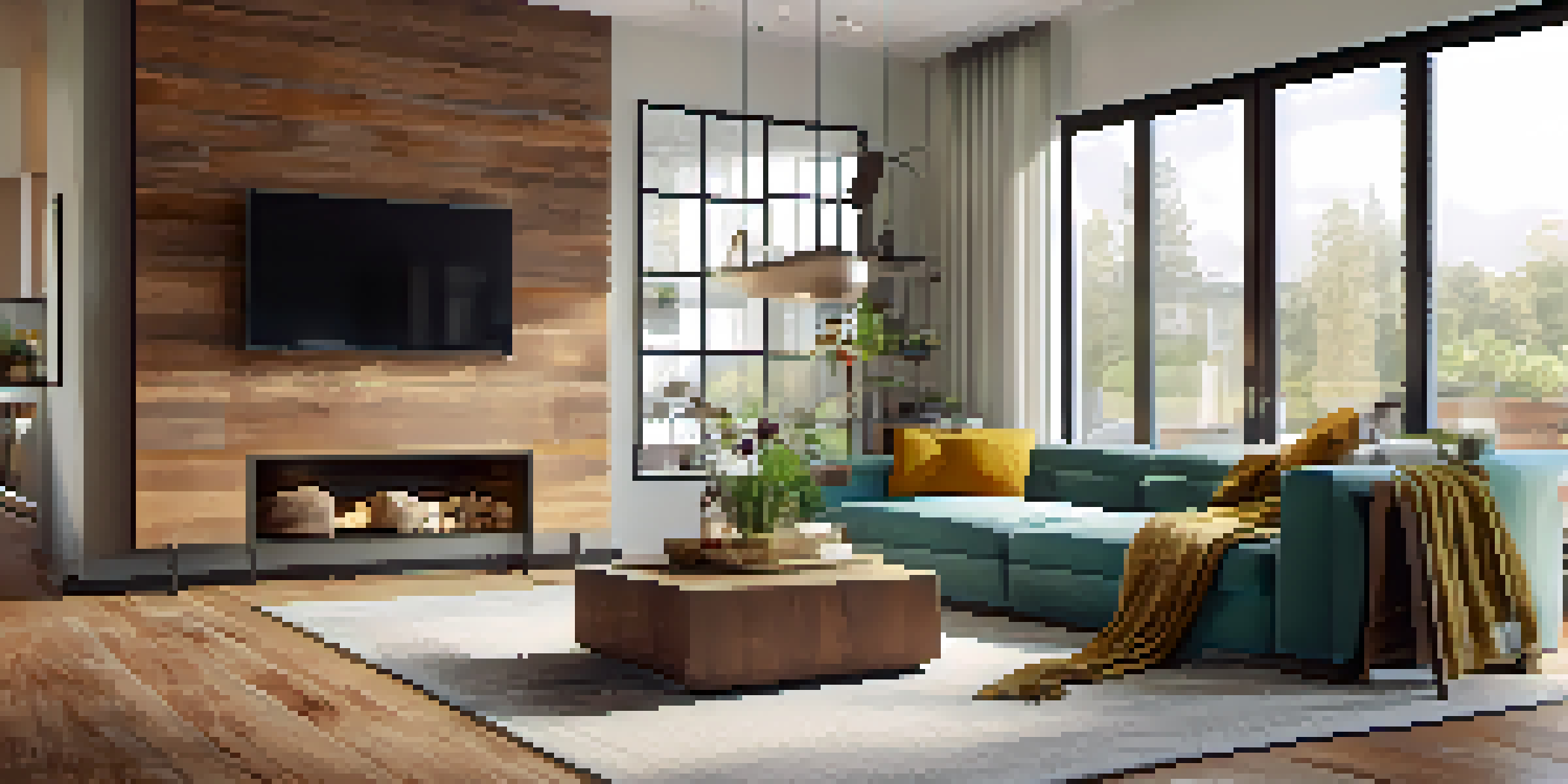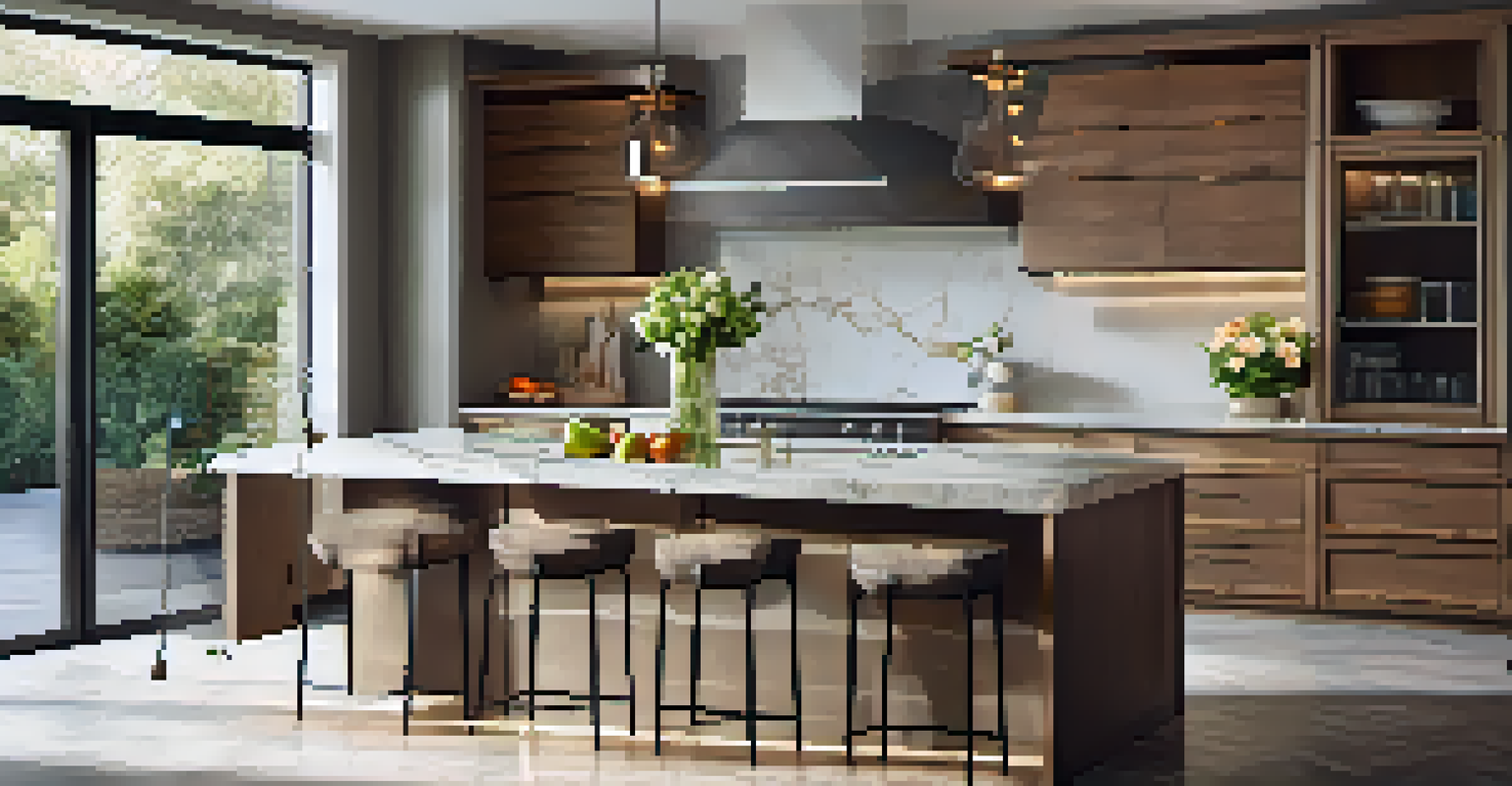Understanding the Role of Professional Designers in Renovation

What Does a Professional Designer Bring to Renovation Projects?
Professional designers offer a wealth of knowledge that goes beyond aesthetics. They understand how to blend functionality with style, ensuring that every space is not only beautiful but also practical. By incorporating their expertise, homeowners can avoid costly mistakes that might arise from poor planning or execution.
Design is not just what it looks like and feels like. Design is how it works.
Designers are skilled in space management, which is crucial in renovations where every square foot counts. They can visualize how a room can be transformed and suggest innovative solutions that homeowners might not consider. This foresight can make a significant difference in maximizing the utility of a space.
Additionally, designers have access to a network of reliable contractors and suppliers. This can simplify the renovation process by providing homeowners with trusted resources, which can lead to better quality work and often, more competitive pricing.
The Importance of a Customized Design Approach
Every home has its unique charm and challenges, which is why a one-size-fits-all approach rarely works in renovations. Professional designers take the time to understand their clients' needs, preferences, and lifestyles, crafting a tailored design that truly reflects the homeowner's vision. This personalized approach ensures that the end result feels authentic and harmonious.

Moreover, a customized design can enhance the overall value of the property. By aligning the renovation with current trends while maintaining a personal touch, designers can help homeowners create spaces that are both trendy and timeless. This balance is essential for achieving a return on investment when the time comes to sell.
Designers Enhance Functionality
Professional designers combine aesthetics with practicality, ensuring that renovated spaces are both beautiful and functional.
Understanding the importance of functionality is also key in a customized design. Designers consider how the space will be used daily, ensuring that every detail serves a purpose while contributing to the overall aesthetic.
Navigating Building Codes and Regulations with Ease
Renovating a home often involves navigating a maze of building codes and regulations. This can be daunting for homeowners who may not be familiar with the legalities involved. Professional designers are well-versed in these requirements, ensuring that all plans comply with local laws, thereby preventing potential fines or costly rework.
Good design is obvious. Great design is transparent.
By understanding zoning laws and safety codes, designers can guide homeowners toward making informed decisions. For instance, if a homeowner desires an open-concept layout, the designer knows which walls can be removed without compromising structural integrity. This knowledge is invaluable in achieving the desired aesthetic while ensuring safety.
Additionally, designers can handle the necessary permits and inspections, streamlining the process for homeowners. This not only saves time but also reduces the stress that often accompanies home renovations.
The Creative Vision that Transforms Spaces
One of the most significant contributions of professional designers is their creative vision. They possess the ability to see potential where others might see limitations, often transforming mundane spaces into inspiring environments. This creative flair is what sets a renovation apart and gives it a unique character.
Designers stay updated on the latest trends, materials, and technologies, allowing them to incorporate innovative ideas into their projects. For example, they may introduce sustainable materials or smart home technology, enhancing both the aesthetic and functionality of a home.
Customized Designs Boost Value
Tailored renovation designs reflect homeowners' unique styles while potentially increasing property value.
Their artistic sensibility also plays a crucial role in color selection, furniture arrangement, and overall styling. A designer can create a cohesive look that ties together various elements, making a space feel harmonious and thoughtfully designed.
Budget Management: Maximizing Value and Impact
While many homeowners fear that hiring a designer will inflate their renovation budget, the opposite can often be true. Professional designers are adept at managing budgets, helping clients allocate funds effectively to achieve the most impact. They understand where to splurge and where to save, ensuring that every dollar spent brings value.
Designers can also provide insights on cost-effective materials and solutions that maintain quality without breaking the bank. For example, they may suggest laminate flooring that mimics hardwood or budget-friendly fixtures that still offer a high-end look.
By closely monitoring expenses throughout the renovation process, designers help prevent unexpected costs from derailing the project. This careful oversight allows homeowners to enjoy their renovation without financial stress.
Collaboration: Building a Team for Success
A successful renovation often hinges on effective collaboration between the homeowner, designer, and contractors. Professional designers act as the bridge, facilitating communication among all parties involved. This ensures that everyone is on the same page and working towards the same vision.
By fostering a collaborative environment, designers can address any issues that arise promptly. They are skilled at problem-solving and can adjust plans as needed while keeping the project on track. This adaptability is crucial in renovations where unforeseen challenges can pop up.
Expertise in Regulations Saves Time
Designers navigate building codes and handle permits, streamlining the renovation process and reducing stress for homeowners.
Moreover, designers often have established relationships with contractors, which can lead to smoother project execution. These connections can also result in better pricing and quality work, further enhancing the overall renovation experience.
The Final Touch: Ensuring a Cohesive Finish
As the renovation nears completion, professional designers play a vital role in ensuring that every detail aligns with the overall vision. They focus on the finishing touches, from selecting the perfect accessories to arranging furniture in a way that enhances the space's flow. This attention to detail is what truly elevates a renovation.
Designers also conduct final walkthroughs to ensure everything meets the agreed-upon standards. They verify that the design elements come together cohesively, creating an inviting atmosphere that feels complete. This final step is essential for achieving the desired outcome and homeowner satisfaction.

Ultimately, the designer's involvement doesn't end with the physical changes; they also help homeowners transition into their newly renovated space. By providing guidance on maintenance and care, designers ensure that the beauty and functionality of the renovation endure for years to come.